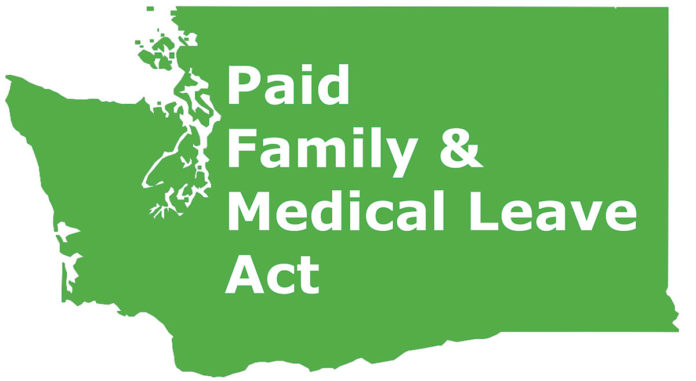The Washington State Paid Family and Medical leave act is a social contract with the state to make employees whole when they are struck down with the ailments we all suffer, or when they choose to expand their family or take care of a loved one. The new law is not employer-dependent, and offers a benefit that many employers only wished they would be able to. After all the very word company evolved from companion, literally one to break bread with.

That said, Washington businesses, and particularly those in our complicated bi-state region, are reeling from the sheer number of recently enacted laws affecting employers, according to Amy Robinson, an employment attorney with Miller Nash, Graham and Dunn in Vancouver.
“The reality is most employers in Washington have had to cope with so many new laws at the state and federal level over the last 10 years. I have sympathy for what I see as a lot of change fatigue,” she said.
What’s more, the state continues to release information about the new policy, putting companies under the pressure to be constantly on watch for new details so as to stay in compliance. While the state has been collecting premiums for the new benefit since January of last year, employees have just become eligible for it as of this month. It may be especially difficult for businesses with less than 50 employees to cope with the nuances of the new law, as they were not previously affected by the federal Family and Medical Leave Act.
In theory, the PMFL is a standard state benefit triggered by life events, and funded by payroll deductions and an employer premium, much like standard healthcare benefits. Companies under 50 (total) employees do not have to pay the employer premium. Those under 150 can apply for grants to cover the cost of the employee being gone. Employees benefit from a simple and timely application process, which results in a generous amount of leave – comparable to other developed nations – and compensation based on hours worked in Washington state.
But the reality is there is gray area as the rubber hits the road in 2020, and employers should keep an eye on certain aspects of the new law, and consider implementing policies that benefit the organization as a whole.
PMFL’s relationship to the federal program, Family Medical Leave Act
Most of the program’s ambiguity falls under its relationship to FMLA and whether an employee’s leave under PMFL can/should run concurrently with FMLA or separately. Though the statute reads the benefits are to be taken concurrently, said Robinson, the rules clearly state that the employee can take one and then the other at different times in the calendar year, or that they can overlap by as little as one day, leaving the employers in a precarious position. “That decision opened the door for more potential opportunities for these leaves to run consecutively, rather than concurrently, in ways that could significantly extend employee leaves beyond what most employers had anticipated. We anticipate there may be some legal challenges and perhaps further changes to these rules going forward,” said Robinson in a statement released by Miller Nash regarding the changes.
Paid time off
PTO has long been used as a recruitment and retention tool, and it’s especially effective in this tight labor market. But employers who offer generous PTO packages may need to take a closer look at how they are used in conjunction with PFML, which provides a pay reimbursement, although it’s not typically going to be 100%. Employers should consider whether they want to restrict the number of PTO days they now offer, or decide when an employee can take them if they are eligible for leave on PMFL. PTO cannot be used concurrently with PMFL, but it can be utilized as a supplemental benefit to bring an employee’s pay up to 100% while they are on leave, in which case it must be properly tracked by the employer. Short-term disability can be used concurrently to PFML. All changes must stay in compliance with state laws on sick leave.
Health benefits
According to the Employment Security Division, only if FMLA and PMFL overlap are employers required to continue health benefits.
“You may be required to continue your employee’s health benefits while they take Paid Family and Medical Leave. If they are eligible for leave under the Family and Medical Leave Act (FMLA), and their use of FMLA and Paid Family and Medical Leave overlaps for at least one day, you are required to continue their health coverage for the entire duration of their Paid Family and Medical Leave. If they are responsible for paying some of the health insurance premium, you can require that they continue to pay their share.”
Employers will have to decide whether they will continue to provide health benefits during PMFL not running concurrently to FMLA.
Job protection
The rules have become clearer on this topic. They now state that, “Employees who return from leave under this law must be restored to a same or equivalent job if they work for an employer with 50 or more employees, have worked for this employer for at least 12 months and have worked 1,250 hours in the 12 months before taking leave.” Keep in mind, however, that the employee count is determined in the same way as FMLA, which is different than PFML.
The bottom line is that companies should stay in close contact with their human resources professionals or employment attorneys, and use the many resources available from the state such as https://paidleave.wa.gov/employers in order to stay in compliance with the new law and offer their employees top-notch benefits in today’s market.






